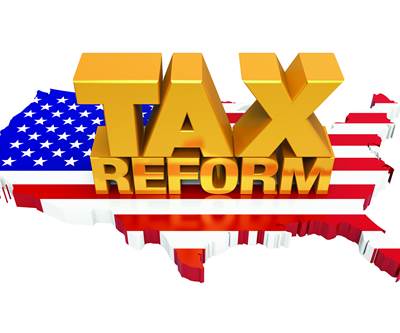The Impact of Tax Reform on Bonus Depreciation
Tax reform made the following changes to the bonus depreciation rules: a new 100-percent bonus depreciation percentage, an expanded definition of eligible property to include used depreciable property, and an extended placed-in-service phase-out date from before January 1, 2020, to before January 1, 2027.
The Tax Cuts and Jobs Act (the Act) allows mold shops to claim 100-percent bonus depreciation for eligible property that they place in service after September 27, 2017 through December 31, 2022. The claim amount phases out 20 percent for each of the following five years. This past August, the U.S. Treasury issued a notice of proposed rulemaking related to bonus depreciation (or first-year depreciation deductions).
Mold shops are allowed a depreciation deduction for the exhaustion, wear and tear and obsolescence of property that they have used in the business. For tangible property, the allowable depreciation deduction is determined under the Modified Accelerated Cost Recovery System (MACRS).
Before the Act, qualified property was defined as new property. Moldmakers were allowed an additional bonus depreciation (or first-year depreciation deduction) equal to 50 percent of the adjusted basis in the property.
Proposed Regulations
Tax reform made the following changes to the bonus depreciation rules: a new, 100-percent bonus depreciation percentage; an expanded definition of eligible property to include used, depreciable property; and an extended, placed-in-service phase-out date from before January 1, 2020, to before January 1, 2027 (which extends the ability of mold shops to claim bonus depreciation by seven years).
The new U.S. Treasury regulations identify the following requirements for property to qualify for bonus depreciation:
The depreciable property must be a MACRS property that has a recovery period of 20 years or less, some purchased software or qualified improvement property that shops place in service after September 27, 2017 and before January 1, 2018. For moldmakers, this includes most machinery, equipment and tooling that they do not use in the conduct of research (which would be deductible as the expenditures are paid or incurred). Also, the purchased software would qualify (as long as shops do not purchase it as part of the purchase of a trade or business). Qualified improvement property includes improvements to the shop that do no expand its footprint.
The original use of the property must commence with the shop, or used equipment must meet specific requirements. The original use of the eligible property must commence with the company, or the shop must not purchase the used equipment from a related party. Tax reform broadened the definition of property eligible for bonus depreciation to include used property. This will impact mergers and acquisitions, as many middle-market transactions are structured as asset sales. That is, if a mold shop purchases all of the assets of another shop, it can claim 100-percent bonus depreciation on the purchase price that is allocated to otherwise eligible assets.
Eligible property must be placed in service by the shop within a specified period. A shop must place the asset in service after September 27, 2017 and before December 31, 2027 to qualify for bonus depreciation. An asset is considered in service once it is ready, available and capable of performing its intended function.
Documenting when a shop places an asset in service is more important than ever, especially if the asset has the potential to qualify for 100-percent bonus depreciation. Historically, the IRS has pushed for latter placed-in-service dates to slow depreciation deductions. However, if a shop places an asset in service around September 27, 2017, the IRS may want proof that it meets the requirements for the 100-percent bonus depreciation.
The depreciable property must be acquired after September 27, 2017 or acquired by the shop under a written, binding contract entered into by the shop after September 27, 2017. The regulations also clarify that assets that are custom-manufactured, constructed or produced for a shop are subject to the written, binding contract rules. For example, if the contract states the date that the parties entered into the contract, the closing date and the delivery date, then the date that the parties entered into the contract is the date that the shop acquired the property. For self-constructed assets (that do not qualify as research expenditures), the acquisition date is the date that the shop begins manufacturing, constructing or producing the property.
Tax reform made the following changes to the bonus depreciation rules: a new, 100-percent bonus depreciation percentage;, an expanded definition of eligible property to include used, depreciable property;, and an extended, placed-in-service phase-out date from before January 1, 2020, to before January 1, 2027 (which extendsing the ability of mold shops to claim bonus depreciation by seven years).
Elections
Bonus depreciation is automatic unless a shop instead elects a particular class life. Mold shops must make an election for each class life for which it does not want bonus depreciation. For example, if a shop elects out for all seven-year assets, it would claim bonus depreciation on all otherwise eligible assets and depreciate the seven-year assets under the normal MACRS rules. U.S. Treasury regulations do not make any changes to these rules.
However, given the overlap of the 50-percent bonus depreciation that existed before tax reform and the new 100-percent bonus depreciation, transition rules are necessary. The 100-percent bonus depreciation is automatic. Mold shops also can elect out of the 100-percent bonus depreciation in favor of the 50-percent bonus depreciation. However, such election would apply to all property for which bonus depreciation is eligible and not by class life.
Technical Corrections
While unlikely to pass during an election year, Congress is considering a technical correction bill related to tax reform. One of the more prominent provisions relates to the class life of qualified improvement property placed in service after December 31, 2017. The Congressional writers intended a 15-year period, making it eligible for bonus depreciation. However, because of a drafting error, qualified improvement property placed in service after December 31, 2017 is a 39-year property.
The bottom line is that because of the increased percentage of bonus depreciation from 50-percent to 100-percent and the broad definition of eligible assets to include any MACRS property with a class life of 20 years or less, mold shops can benefit greatly from the new bonus depreciation rules.
The bottom line is that because of the increased percentage of bonus depreciation from 50-percent to 100-percent and the broad definition of eligible assets to include any MACRS property with a class life of 20 years or less, mold shops can benefit greatly from the new bonus depreciation rules.
Many shops should consider cost segregation on their plant and property because by segregating the real property (typically 39-year life property) from personal property (typically 15-year life property or less), they will be able to depreciate their capital assets more quickly.
About the Contributor
Michael J. Devereux II, CPA, CMP is a partner and director of manufacturing, distribution and plastics industry services at Mueller Prost LC.
Related Content
MMT Chats: Solving Schedule and Capacity Challenges With ERP
For this MMT Chat, my guests hail from Omega Tool of Menomonee Falls, Wisconsin, who share their journey with using enterprise resource planning (ERP)—and their people—to solve their schedule and capacity load monitoring challenges.
Read MoreMaking Quick and Easy Kaizen Work for Your Shop
Within each person is unlimited creative potential to improve shop operations.
Read MoreMold Design Review: The Complete Checklist
Gerardo (Jerry) Miranda III, former global tooling manager for Oakley sunglasses, reshares his complete mold design checklist, an essential part of the product time and cost-to-market process.
Read MoreThe Role of Social Media in Manufacturing
Charles Daniels CFO of Wepco Plastics shares insights on the role of social media in manufacturing, how to improve the “business” side of a small mold shop and continually developing culture.
Read MoreRead Next
The Bottom Line: The Impact of Tax Reform on Moldmaking
The Tax Cuts and Jobs Act of 2017 should decrease a moldmaker’s overall tax liabilities.
Read MoreHow to Use Strategic Planning Tools, Data to Manage the Human Side of Business
Q&A with Marion Wells, MMT EAB member and founder of Human Asset Management.
Read MoreReasons to Use Fiber Lasers for Mold Cleaning
Fiber lasers offer a simplicity, speed, control and portability, minimizing mold cleaning risks.
Read More




















